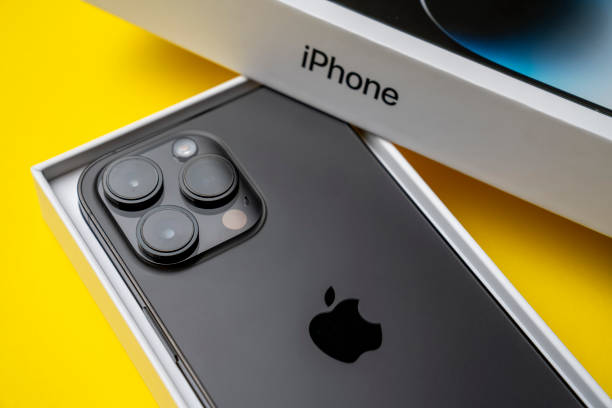In our fast-paced digital world, the integrity of your data is constantly at risk. Every photograph, document, and important email sits precariously on your personal devices, vulnerable to loss from various threats. While many people believe their device is safe, the reality is that hardware can fail, software can malfunction, and accidents can happen. That’s why forming a reliable backup system is not just a suggestion—it’s a necessity. In this guide, you’ll learn how to not only safeguard your digital assets but also bring peace of mind knowing that your valuable information is secure and easily retrievable.
A reliable backup system means implementing a strategy that caters to your unique data needs. Whether you use your device for work, personal projects, or storing cherished memories, ensuring those files are backed up is critical. This comprehensive approach will help you understand different backup options, how to choose the right methods for your needs, and steps for a foolproof setup. As you navigate this process, the picture becomes clearer; with just a few thoughtful decisions, you can effectively protect yourself from the inevitable data loss that life throws your way.
Understanding the Importance of Backups

Backing up your personal devices transcends the ordinary—it’s about taking proactive steps to prevent the heartache of lost memories and vital information. Imagine the sheer panic of deleting that irreplaceable family photo or the consequences of losing years’ worth of work documents. Depending solely on your device’s internal storage is a risky gamble. Regular backups not only safeguard against hardware failures but also protect your data from ransomware and other cyber threats. By prioritizing backups, you’re investing in your digital future, ensuring that your information remains intact and accessible regardless of the challenges you may face.
Types of Backup Solutions

When it comes to effective data protection, understanding the various types of backup solutions is essential. The right choice can mean the difference between easily recovering your files or facing a daunting and potentially irreversible loss. There are three primary categories to consider: local backups, cloud backups, and hybrid solutions. Each method has its unique advantages and specific use cases, making it important to assess which one, or combination, aligns best with your needs. The following list summarizes the pros and cons of each option to help streamline your decision-making process:
- Local Backups: Physical devices like external hard drives offer fast data access but are vulnerable to theft and physical damage.
- Cloud Backups: Off-site storage provides flexibility and accessibility from anywhere but requires a stable internet connection.
- Hybrid Solutions: Combining both methods gives the best of both worlds, ensuring redundancy in case one option fails.
Selecting a backup strategy involves considering a multitude of factors that align with your data needs. The frequency of your backups can drastically vary depending on how often you create or modify files. For instance, daily backups may suit someone who works with changing datasets, while weekly or monthly backups might suffice for others. Additionally, identifying the types of files to prioritize during backups is crucial; focus should be placed on irreplaceable documents, cherished family photos, and vital work presentations. Lastly, assess your storage capacity needs—this not only impacts your initial setup but can also influence your choice of backup solutions moving forward.
Setting Up Your Backup System
Once you’ve laid out a sound backup strategy, it’s essential to dive into the specifics of setting it up. The actual implementation might seem daunting, but breaking it into manageable steps can simplify the task significantly. Below are detailed instructions for both local and cloud backups:
Step-by-Step Setup for Local Backups
- Connect your external drive to your computer.
- Open your backup software and select the files and folders you want to back up.
- Schedule your backup frequency and save the settings.
Step-by-Step Setup for Cloud Backups
- Choose a reliable cloud provider and create an account.
- Download their backup software and install it on your device.
- Select the files you wish to back up and set your backup schedule.
To provide further clarity, here’s a comparison of the storage options mentioned earlier:
| Backup Type | Pros | Cons |
|---|---|---|
| Local Backups | Fast access; no internet needed | Vulnerable to physical damage |
| Cloud Backups | Access from anywhere; automatic syncing | Dependent on internet connection |
| Hybrid Solutions | Best protection; versatile | Can be more complex to set up |
Testing Your Backup System
Setting up your backup system is just the beginning; testing is paramount to ensure everything operates smoothly. Implementing regular restore tests is vital to verify data integrity. This means that you should periodically attempt to restore data from your backups to confirm that everything is functioning as expected. Knowing that your data can be retrieved efficiently provides peace of mind and ensures that you won’t face unnecessary surprises in a crisis.
Conclusion
Creating a reliable backup system for your personal devices is more than just a technical necessity; it’s a commitment to protecting what matters most to you. With a solid understanding of various backup options, selecting the right strategy, and setting up your system with care, you’re well on your way to safeguarding your valuable data. Regularly testing your backups will further secure your confidence, ensuring that you’re prepared for any digital mishap. Start today, and take control of your data’s future.
Frequently Asked Questions
- What is the best backup solution for personal devices? The best backup solution often combines both local and cloud backups to ensure maximum safety for your data.
- How often should I back up my devices? It depends on your data usage, but daily or weekly backups are recommended for active users.
- Can I rely on free cloud backup services? While free services can be useful, they often come with limitations. Assess their reliability before depending on them for critical data.
- What types of data should I prioritize in my backups? Focus on important documents, photos, videos, and files that are irreplaceable or vital for your personal or professional life.
- Is it enough to back up my data only once? No, regular backups are crucial as data can change frequently. Set up a schedule for ongoing backups.



